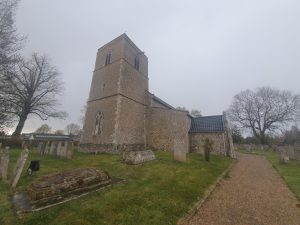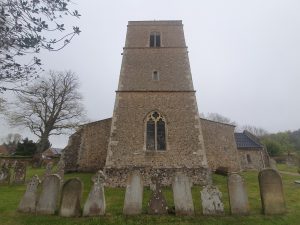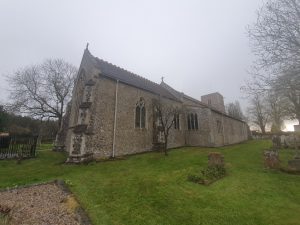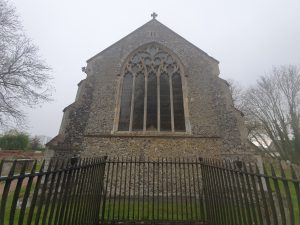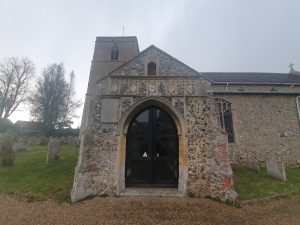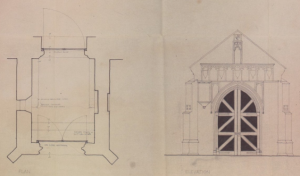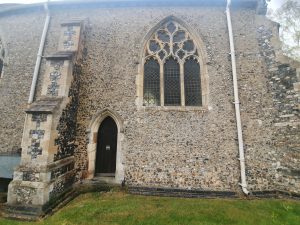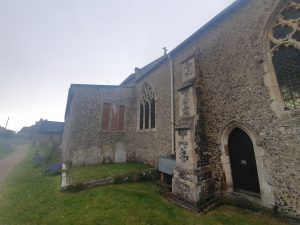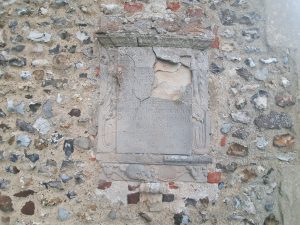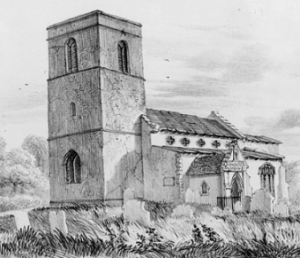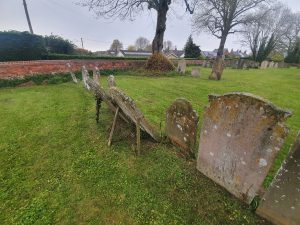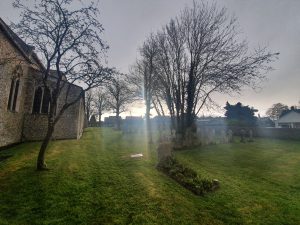Weston Longville – All Saints Church
It started to pour with rain when Richard and I arrived at All Saints church in Weston Longville, which was unfortunately locked and even the porch wasn’t accessible. Perhaps it was just the rain, but it all felt a little stark and unwelcoming. Hopefully I will be able to visit the interior of this Grade I listed church in the future, as there are medieval wall paintings, a painted screen and a memorial to Parson Woodforde.
The tower is the oldest part of the church, dating from the thirteenth century. It once had a steeple as well, but it fell off in 1602, which I can imagine annoyed the locals.
The nave and the chancel are from the fourteenth century, when the previous structure was substantially rebuilt, but it’s likely that there was a church on this site during the late Saxon period.
The church is perhaps best known for Parson James Woodforde, who was rector here between 1776 and 1803 and wrote numerous diaries which are a snapshot of rural England in the late eighteenth century.
The fifteenth century porch, with the shield above the empty niche being that of the Company of French Merchant Adventurers.
The porch was modernised in the 1970s and this plan is in the Church of England archives.
The priest’s door.
The window at the end of the aisle was blocked up before 1718, which is the date of the memorial tablet on the other side of the wall.
This stone on the exterior of the porch is in a poor state of repair and I can’t imagine that it’ll last for that much longer. It’s a shame that it can’t somehow be preserved.
This illustration is by Robert Ladbrooke and is from the middle of the nineteenth century, with the now damaged stone visible on the exterior of the porch.
The extensive graveyard is neat and tidy, with some efforts being made to support those stones which it’s fair to say aren’t all exactly standing upright.
The sun started to shine through the rain just as we were leaving. George Plunkett took a photo of the church in 1939, but not much has really changed in the intervening period.


